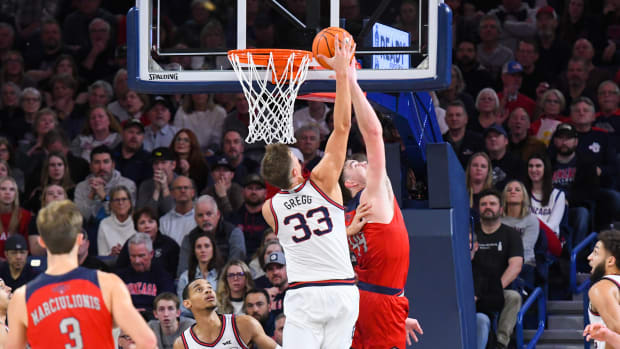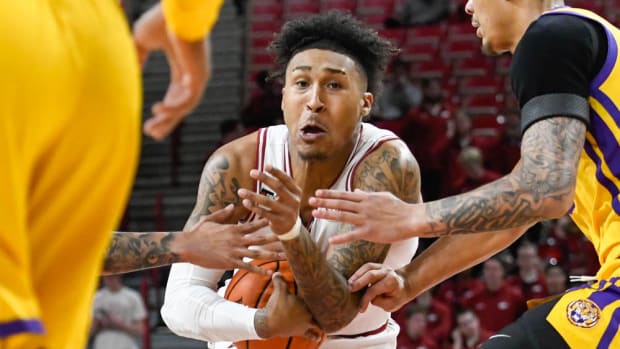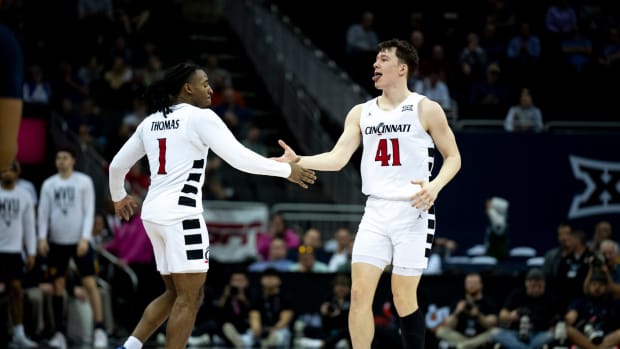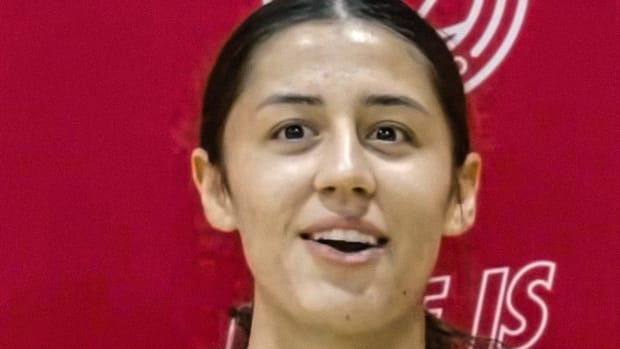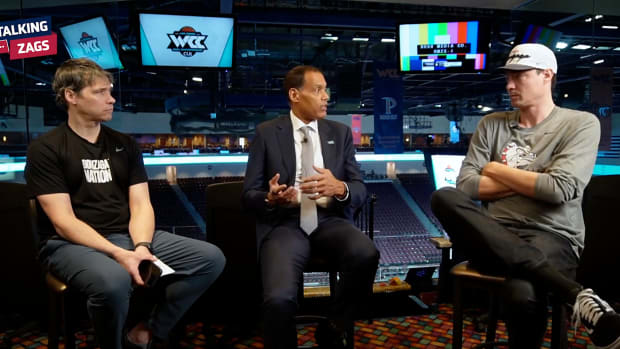College Basketball Best Bets: Butler Should Clean Up on Road
Three Man Weave and I are back with our four favorite bets from Wednesday's college basketball slate.
Butler at Seton Hall
3MW Pick: Butler +3
Thanks to Myles Powell’s superhuman late-game heroics, Seton Hall has become the Harry Houdini of college basketball. The Pirates have repeatedly ‘walked the plank’ this season, yet have miraculously emerged victorious in seemingly every close call. Against Kentucky, Hall led for less than two minutes of regulation (result: won in overtime). Against St. John’s, the Pirates dug themselves a 14-point hole in the first half and faced a double-digit deficit midway through the second half (result: won on a buzzer beater). At Xavier, they were 10 points back with just over 10 minutes remaining (result: won comfortably).
Despite losing one of the most decorated senior classes in program history, Powell—a once-forgotten role player turned superstar—has Seton Hall eyeing yet another trip to the NCAA tournament. Even among a laundry list of qualified Big East Player of the Year candidates, it’s safe to say no one has been more valuable to their team than Powell. Seton Hall’s arsenal of offensive weapons was drained this summer, but Powell’s otherworldly shot-making has kept the Pirates’ ship afloat.
DePaul managed to sink the Pirates on Sunday by holding Powell to just 16 points on 4-of-13 shooting by simply refusing to let him catch the rock anywhere on the floor. He did get free on a few occasions, but Dave Leitao had Max Strus glued to Powell for the entire game, forcing him to work tirelessly just to get the ball. This blueprint is one LaVall Jordan should follow tonight, especially with two stout on-ball defenders in Aaron Thompson and Henry Baddley, both of whom possess the length to disrupt Powell’s shooting vision and airspace.
On the surface, it may seem tough to find a meaningful edge in a game between two consistently strong Big East programs that know each other like the back of their hand. For context, in each of the last four conference meetings in Newark between these two, the final game line has closed within a five-point range and neither team has been favored by more than 2.5.
2015: Seton Hall -2
2016: Seton Hall -2.5
2017: Butler -2
2018: Seton Hall -2.5
But tonight, the Bulldogs’ half-court offense should give Butler backers a significant advantage...
Since LaVall Jordan returned to his alma mater two years ago, Butler’s offense has been heavily dictated by guard penetration, which is typically initiated off pick-and-roll or dribble weave handoff action. The floor is always well spaced, giving the Bulldogs' offensive catalyst, Kamar Baldwin, plenty of real estate to knife into the belly of the defense. So far this season, the Pirates have struggled to contain the dribble drive defensively, and currently rank in the 28th percentile in points per possession allowed against the pick-and-roll, per Synergy. This could present a juicy opportunity for Baldwin to put constant pressure on Hall’s off-ball defenders and, in turn, create some open looks for a trio of long range snipers in Paul Jorgensen, Sean McDermott and Jordan Tucker.
Roundtable: Who Will Be College Basketball's Last Undefeated Team Standing?
Davidson at George Mason
3MW Pick: Davidson -1
Conference play means a fresh start for teams across the country, and few needed that more than George Mason, which repeatedly hit the snooze button on the 2018–19 season until Christmas. In their first two Atlantic 10 games following a disappointing 6–7 non-conference schedule, the Patriots have thrashed both St. Joe’s and St. Bonaventure, raising their kenpom rating nearly 30 spots in the process, and have shown to be the team many pegged to finish in the league’s upper echelon.
On the other side, though, awaits a foe that similarly welcomed the opening of league play, as it meant the return of star guard Kellan Grady, who had missed the previous four games with a knee injury (three of which were losses to Division I teams). Davidson, our preseason pick to win the Atlantic 10, may actually be better in the long run following the brief Grady absence. A heavier burden fell on Jon Axel Gudmundsson, who looks like an A-10 Player of the Year candidate himself, and redshirt freshmen Luke Frampton and Luka Brajkovic. The losses on the court certainly hurt the Wildcats’ at-large case (it’s likely auto-bid or bust now), but having the youngsters thrown into the fire against North Carolina, Temple and Wake Forest should pay long-term dividends in the A-10 race.
Without Grady, Davidson’s predictive metric rankings faltered, which signals to us that they may currently be slightly underrated. Now that he’s back, we fully expect Davidson to play to a very high level, and its star shooter is a big reason why. In that A-10 preview, we highlighted Bob McKillop’s intricate motion offense, which uses a barrage of off-ball movement to tie the defense in knots, often predicated on putting Grady in a position to score. The emergences of Frampton and Carter Collins into knockdown shooters makes it even harder to guard, because helping even one step too far can result in three points. The difference in this game, though, may be Brajkovic as a post threat. The gangly Austrian is scoring 1.105 points per possession there, placing him in the 88th percentile nationally per Synergy, and George Mason’s bigs will all be giving up several inches in the paint. Indeed, none of Mason’s four forwards rank higher than the 43rd percentile in post defense, demonstrating how their size deficiency can be an Achilles' heel. Plus, with so much screening and cutting going on off the ball, it’s extremely hard to help as Brajkovic backs his defender down for a half-hook.
On the other end, George Mason isn’t designed to exploit Davidson’s biggest weakness, which is guarding the three-point line, as it ranks 262nd in three-point attempt rate. Last year’s campaign swung when McKillop opted to play more 2–3 zone, and although he’s only used it 10% of the time this year, this is a perfect matchup to roll it out. The Patriots want to spread you out with four guards and drive off the bounce, something the zone is designed to take away. Mason also typically only sends one body to the offensive glass, again not taking advantage of the zone’s propensity to cede second-chance opportunities. Instead, coach Dave Paulsen stresses transition defense, which isn’t a concern against a Davidson team that wants to walk the ball up.
This game will almost certainly be played in the halfcourt, which means offensive execution will be at a premium. We at the Weave have an undying love for McKillop’s motion, and with his full arsenal of weapons back in stock, Davidson should assert itself as the conference favorite we expected it to be.
GEARY:Power Rankings: First Week of Conference Play Brings Plenty of Changes
Arizona at Stanford
Meyer’s Picks: Stanford +3.5, Under 140 Points
The last time Stanford beat Arizona was Jan. 4, 2009, with Landry Fields getting the upper hand over Chase Budinger. That’s right, the Wildcats have defeated the Cardinal 17 straight times. But I also think Arizona is the most overrated team in the Pac-12 right now, and this is a prime spot for Stanford to end this dubious streak.
Let’s take a look quickly at Arizona’s last three games, all at home. The Wildcats eked out a 70–68 win over UC Davis, which is currently ranked No. 250 on kenpom.com. The Aggies actually were winning in McKale until Justin Coleman’s go-ahead three with a minute left. Arizona did muster an eight-point win against Colorado to start Pac-12 play, though the Buffaloes have performed considerably worse away from home so far this season. The Wildcats then survived Utah 84-81 in overtime, and that was with the Utes playing sans their top player, Sedrick Barefield, for the final 6:44 of the game after he fouled out.
Now the Wildcats find themselves on the road at Maples Pavilion, where Stanford is 5-0 on the season. The Cardinal are coming off a disappointing L.A. road trip in which they lost by double figures to both UCLA and USC. Yet, I’d venture to say that Stanford is the more talented team compared to its opponent on Wednesday night.
The Cardinal are led by two sophomores, KZ Okpala and Daejon Davis. Okpala is one of the most unique players in the Pac-12, if not in all of college basketball. He’s a 6’9” forward who can slash to the hole, score off the dribble or spot up from outside (he’s shooting 46.3% on threes this season). Davis is the engine to Stanford’s motion offense, as he’s an efficient scorer who also distributes the ball well. They combine to average 10.6 fouls drawn per 40 minutes, a problem for an Arizona team that doesn’t have much depth. Sophomore big man Oscar Da Silva and freshman shooter Cormac Ryan are also key offensive weapons for the Cardinal, especially when Jerod Haase puts Okpala at the 4 and Da Silva at the 5 for max floor spacing on offense.
On the opposite side, the knock on Sean Miller-coached teams that they tend to struggle a lot more against zone defense compared to man. Per Synergy, Arizona’s half-court offense this season is in the 71st percentile in terms of PPP against man, and drops to the 34th percentile against zone. Stanford has opted for zone on 25.9% of its defensive possessions this season, and has been better running zone compared to man (62nd percentile for zone, 36th percentile for man). I expect Haase to crank up his team’s zone usage in this one, knowing Arizona’s struggles against it.
The Cardinal are also one of the strongest perimeter defending teams in the country. They allow just 26.0% of opponent’s shots from beyond the arc, which is the lowest in college basketball. Opponents aren’t shooting well on their rare three-point attempts vs. Stanford either, sporting a 29.3% mark (22nd). Three of the four top scorers on the Wildcats (Brandon Randolph, Brandon Williams, Justin Coleman) average more than three three-pointers attempted per game, while two of them (Randolph and Williams) average more than five per contest.
Stanford will be trying to avoid an 0–3 start in Pac-12 play and stop Arizona’s 17-game winning streak against it. The Cardinal have the height (third in average height per kenpom.com) to really disrupt Arizona offensively, especially if they go into zone for the majority of the game. The big question will be whether Stanford can hit enough shots and limit turnovers (292nd in turnover percentage) against Arizona’s stingy defense, ranked 35th in defensive efficiency. I think the Cardinal’s superior talent will prevail in a low-scoring affair in Palo Alto.
Overall record: 12-12-1
